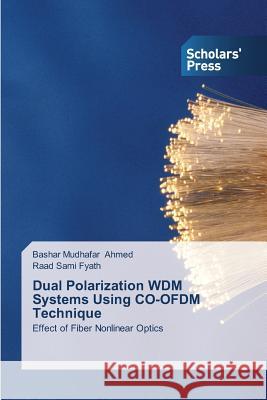Dual Polarization WDM Systems Using CO-OFDM Technique » książka
Dual Polarization WDM Systems Using CO-OFDM Technique
ISBN-13: 9783639669770 / Angielski / Miękka / 2014 / 112 str.
In recent years, there is increasing interest in using dual-polarization (DP) technique to enable future systems with at least 100 Gb/s rate per channel to operate over existing optical networks. The performance of these advanced systems can be enhanced further by using CO-OFDM technique which offers high spectral efficiency and outstanding tolerance of fiber dispersion.This work addresses the effect of fiber nonlinear optics on the performance of dual polarization CO-OFDM/WDM system operating with 100 Gb/s per channel. Different modulation formats, namely BPSK, QPSK and 16-QAM, are used. First, the performance of a single-channel system is investigated in the absence and presence of fiber nonlinearity. The results are compared with a conventional (single-polarization) system to identify the key role played by the DP technique. The investigation is then extended to WDM systems incorporating DP-OFDM technique. The results reveal that the effect of fiber nonlinearity can be reduced by using optimum transmitter laser power Popt. Further, the value of Popt is a function of transmission distance, number of multiplexed channels, and modulation formats.
In recent years, there is increasing interest in using dual-polarization (DP) technique to enable future systems with at least 100 Gb/s rate per channel to operate over existing optical networks. The performance of these advanced systems can be enhanced further by using CO-OFDM technique which offers high spectral efficiency and outstanding tolerance of fiber dispersion.This work addresses the effect of fiber nonlinear optics on the performance of dual polarization CO-OFDM/WDM system operating with 100 Gb/s per channel. Different modulation formats, namely BPSK, QPSK and 16-QAM, are used. First, the performance of a single-channel system is investigated in the absence and presence of fiber nonlinearity. The results are compared with a conventional (single-polarization) system to identify the key role played by the DP technique. The investigation is then extended to WDM systems incorporating DP-OFDM technique. The results reveal that the effect of fiber nonlinearity can be reduced by using optimum transmitter laser power Popt. Further, the value of Popt is a function of transmission distance, number of multiplexed channels, and modulation formats.











